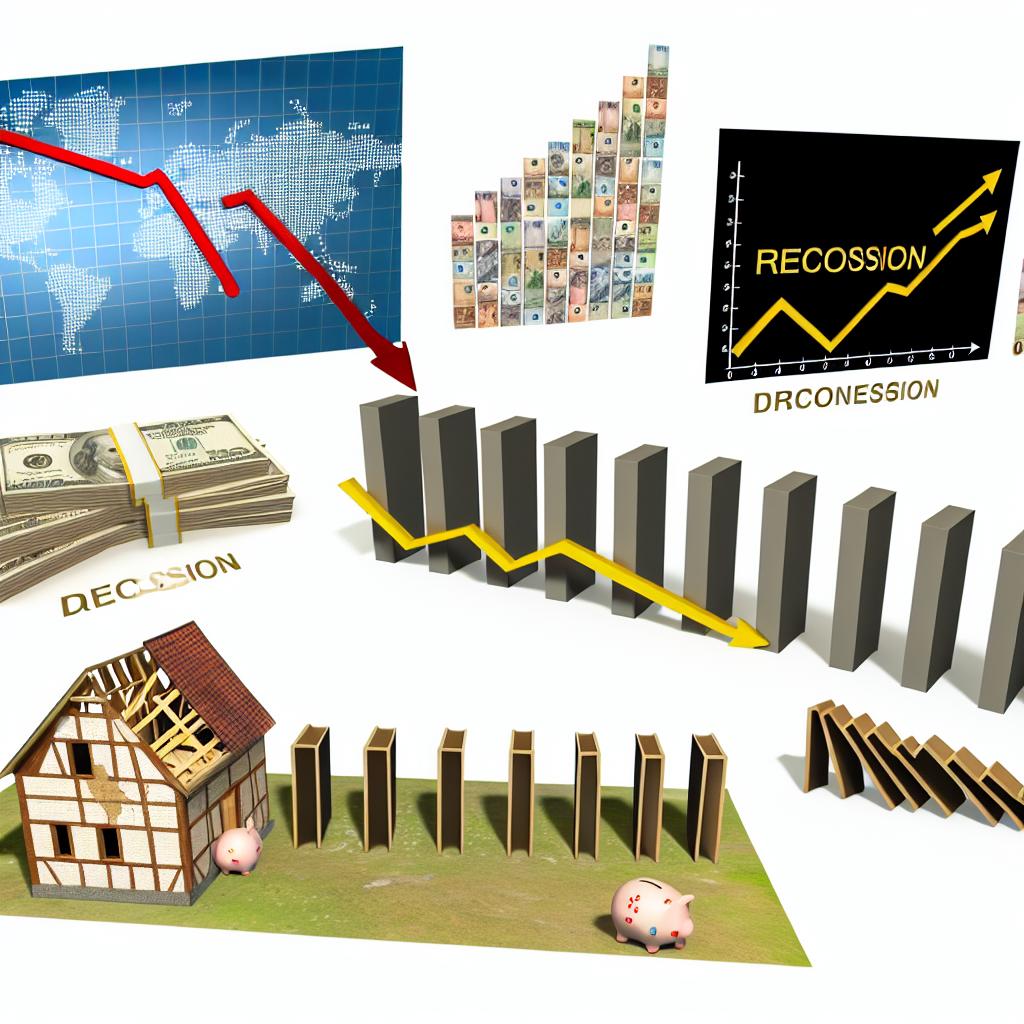Understanding Economic Recession and Its Causes
- Written by: admin
- Category: Uncategorized
- Published: May 11, 2025

Understanding Economic Recession
Economic recessions are critical events that manifest as periods of negative economic growth, typically measured by a decline in real GDP over two consecutive quarters. The onset of a recession triggers a domino effect, impacting various pillars of society, such as employment rates, consumer spending, and business investments. Understanding the causes behind recessions can aid policymakers and economists in crafting strategies that mitigate their harmful effects and potentially prevent future occurrences.
Causes of Economic Recession
Recessions are multifaceted phenomena with no single cause; instead, they result from a confluence of factors that negatively affect the economic environment.
1. Decrease in Consumer Demand
Consumer demand is a significant driver of economic activity. When consumers become hesitant to spend, businesses experience dwindling sales, which then leads to lower production volumes. As companies grapple with this decreased demand, layoffs become prevalent, leading to reduced income for consumers—a cycle that perpetuates further economic decline. Various factors contribute to decreased consumer spending, including rising unemployment, inflationary pressures diminishing purchasing power, and general uncertainty about future economic conditions.
2. Financial Market Disruptions
The financial markets are indispensable to the functioning of a healthy economy, primarily by allocating resources and enabling businesses to access the capital required for growth and operations. However, disruptions in these markets, whether a stock market crash or a widespread banking crisis, can severely undermine investor confidence. When trust erodes, investors and lenders often retreat, leading to credit shortages and increased borrowing costs. Such conditions make it challenging for businesses to secure loans and invest in growth, exacerbating any existing economic woes.
3. Monetary Policy Missteps
Central banks wield substantial influence over the economy through their control of monetary policy tools, notably interest rates. However, missteps in monetary policy can precipitate or worsen economic imbalances. For instance, maintaining interest rates at excessively high levels may suppress borrowing and investment activities, stifling economic growth. Conversely, artificially low interest rates could lead to the formation of asset bubbles, which, if they burst, could destabilize financial markets and the broader economy.
4. External Shocks
External shocks, such as geopolitical tensions, natural disasters, or pandemics, represent disruptive events outside typical economic cycles. These shocks can have sweeping consequences, causing drastic declines in economic output and disrupting trade and investment patterns. As these shocks unravel, they often alter consumer consumption habits and business strategies, sometimes leading to long-lasting changes in economic behavior.
Addressing Economic Recession
In response to the challenges posed by a recession, governments and central banks frequently resort to an array of fiscal and monetary policy measures to stabilize the economy.
Fiscal Policy involves government actions adjusting tax rates and public spending to influence economic activity. During a recession, a government might decide to decrease taxes or increase public spending to stimulate demand and propel economic activity. Such measures can create jobs and increase disposable income, thereby encouraging consumer spending.
Monetary Policy, managed by central banking institutions, primarily involves manipulating interest rates and regulating the money supply. For instance, reducing interest rates can lower borrowing costs, encouraging investment and consumer spending. At the same time, expanding the money supply can increase the availability of funds for businesses and consumers.
Besides these primary strategies, governments and central banks also explore other unconventional monetary tools, such as quantitative easing, which involves the purchase of government securities to inject liquidity into the economy.
In managing and preempting recessions, it is vital for policymakers to thoroughly comprehend the interplay of various causative factors—consumer demand fluctuations, financial market dynamics, monetary policies, and external events. A deep understanding allows for the implementation of nuanced policies that adequately address the multifarious aspects contributing to economic downturns.
For more detailed information and further exploration of these strategies, you might consider looking into renowned resources on financial stability and comprehensive overviews on fiscal policy tools.
In summary, understanding the cause and effect relationships inherent in economic recessions is imperative for devising effective measures aimed at prevention and mitigation. By examining the ecosystem interlinking consumer patterns, financial market forces, monetary strategies, and external factors, decision-makers can preemptively bolster the resilience of economies against potential and emergent challenges, paving the way for more enduring economic stability.
This article was last updated on: May 11, 2025

